
March 2010 Newsletter
**** The 4specs Perspective
Once your website is online, you will want to continually make changes to improve the usability for your users and to improve the search engine results. Over the past 4 years Google (and Yahoo) have improved their Webmaster Tools. The Google Webmaster Tools information will give you feedback from their perspective of changes to evaluate. Here is a step by step guide on steps you will want to take.
The first step is setting up a sitemap for your website. Four years ago our newsletter discussed how to set up a sitemap to help the search engines index your website: https://www.4specs.com/s2a/news/0602_sitemaps.html
This is the link to Google's Webmaster Tools:
https://developers.google.com/search
Settings
Your first step during the setup is to tell Google whether you prefer the www or non-www version of your domain. Most people see the www as meaning a website and that is the one I recommend to use. This is the first step in consolidating all of your domains and versions into one. (In a future newsletter I will cover consolidating these and eliminating canonical problems. Here is additional information on canonical problems):
https://webmasters.googleblog.com/2009/02/specify-your-canonical.html
You can also target your users. You can target which country you prefer. Most manufacturers will want the United States - note combining US and Canada is not an option.
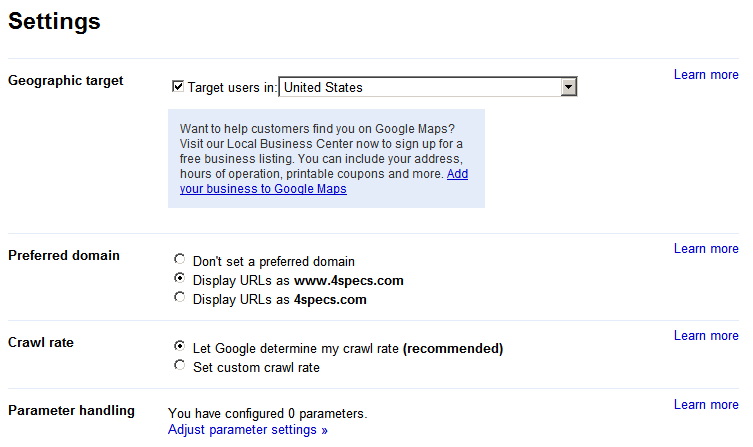
HTML Suggestions
Google will provide suggestions to identify specific problems with your html code. November 2009's 4specs newsletter covered page titles and descriptions. In the specific case below, the page with the duplicate meta description was indexed twice, the second was when our Zoom search page being included. I changed the robots.txt file to exclude all the zoom search pages that caused the duplicate content. These suggestions will start to appear within a week of running this sitemap program.
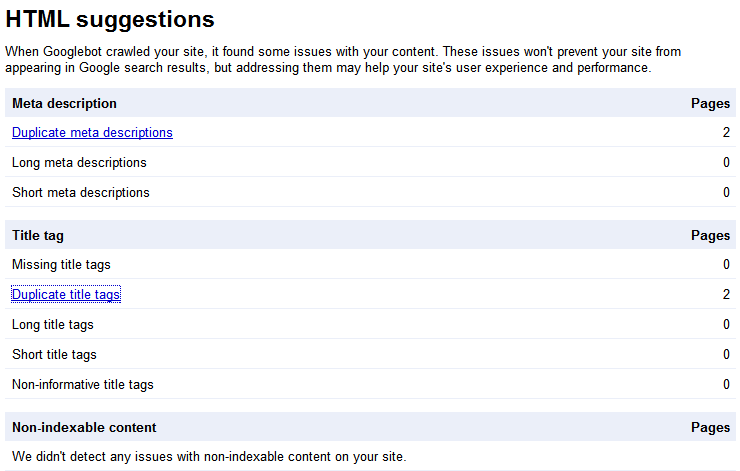
Links to Your Site
This will tell you how many other websites link to your website and which page they link to. A future newsletter will provide you with some ideas on how to increase the number of websites linking to yours - which will generally increase the number of users coming to your site from free - or organic - search engine listings.
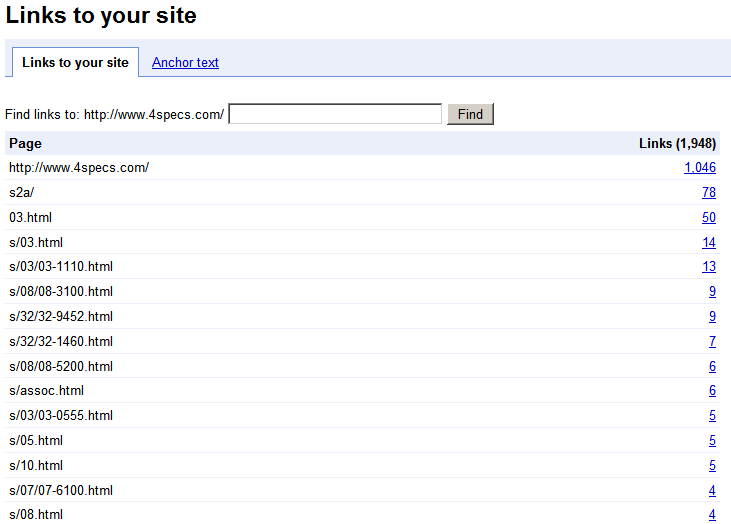
Crawl Errors
This section will show you the pages Google cannot find that are linked from other sites. In our case, most of these are the older MasterFormat 1995 pages which were moved 5 years ago. In most of these cases I set up a redirect from the old, missing page to the new page.
Redirects from old pages to new pages will increase the number of websites successfully linking to yours, which will also improve the free and organic search engine results. In a future newsletter I will discuss how to do this at the server level in more detail. In short, I put in our .htaccess file (for a Unix server) this line which redirects the old page to the new page:
RedirectPermanent /14.html https://www.4specs.com/s/14.html
and that corrected the error for this page. The Google Search Engine Optimization Starter Guide is a good starting spot.
{link no longer works]

Links to Your Site
Going to specific pages listed in Google Sitemaps, you can see who is linking to specific pages. This is one of our old MF1995 pages and we can see who is linking there. In addition to doing a rewrite of the URL as I just showed above for the 14.html page, you may want to contact the other website, thank them for the link and suggest they update the link to the new one.
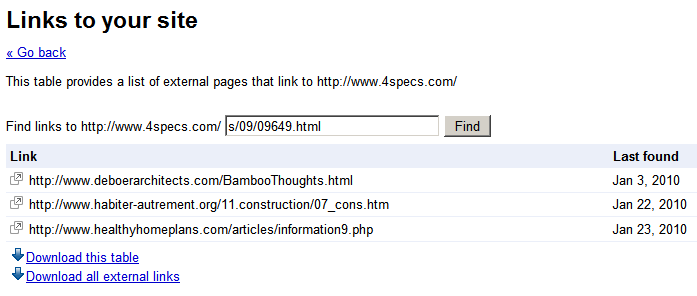
Sitelinks
Some sites have sitelinks in their Google search results. As most manufacturers will not have this shown, there is not much to do here. This is a screen shot of the 4specs Sitelinks listing:
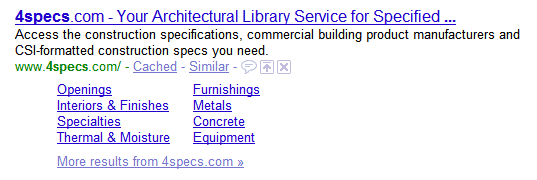
Using Google Site Maps you can do some editing of the results you show. Search for your company and see if you have a Sitelink and if the Sitelinks are appropriate.
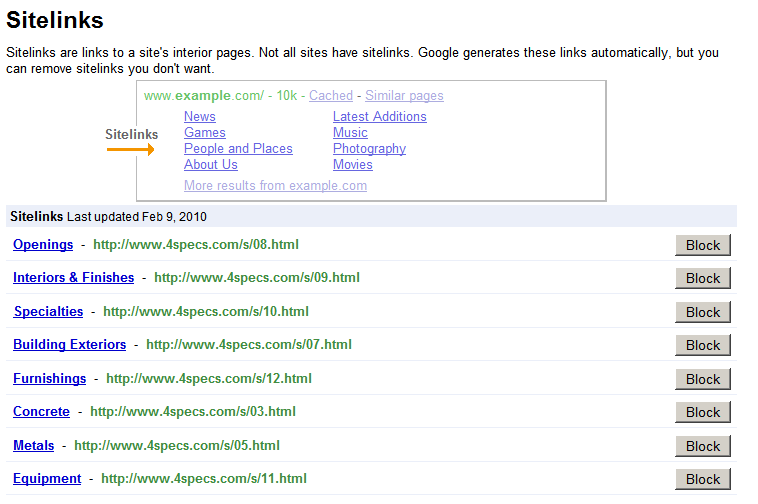
Site Performance
Speed, Speed and More Speed will be the topic of a future newsletter. Google is reportedly starting to include the speed of websites as a factor in their organic search results. Fast is better. The Site Performance section of Google Sitemaps will give you a rough estimate of how Google and their users see the speed of your site. Here is information about Google's use of website speed.
https://searchengineland.com/site-speed-googles-next-ranking-factor-29793
Even if it does not affect the Google search results, faster sites will better engage the user. I have put a lot of thought into the speed of 4specs and have a few ideas on how to improve some of the 4specs' slower pages. Some changes are easy to do, some are tough. More about this over the next few months.
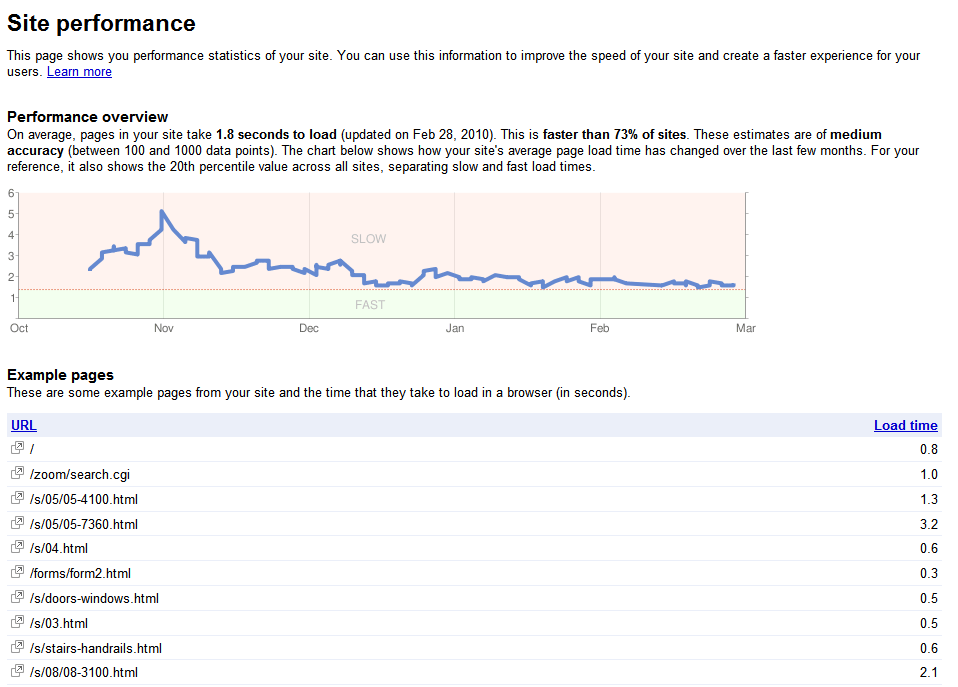
Top Search Queries
Using this report, you can see the search terms where your website appeared the most in the Google results and which search terms provided the highest percentage of clickthroughs. These may be different than the query words you are seeing in your analytics reports. These take into consideration the frequency of the term as well as the percentage of times a clickthrough results for you.
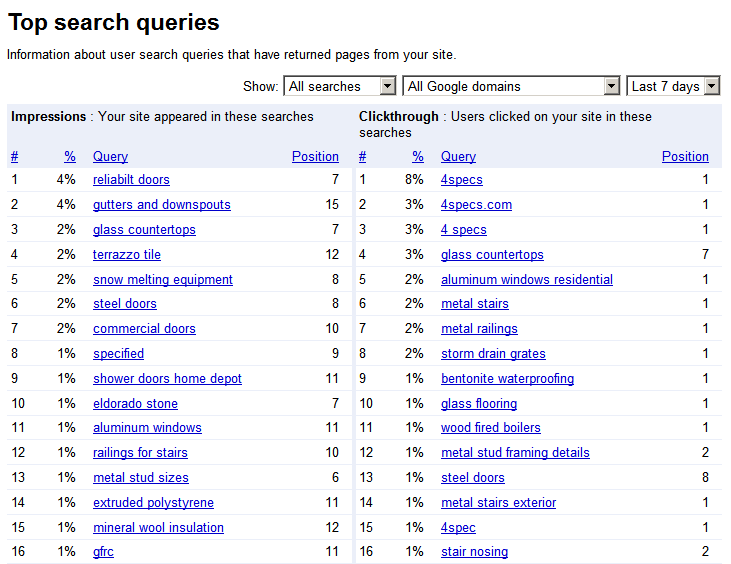
While working on this newsletter, I discovered a problem with Google reading the 4specs' site map. When I looked over the list of files I found 4 files I did not want in the site map, made the corrections and resubmitted the site map. Within 15 minutes Google had retrieved the updated sitemap.
This may seem like a lot of work, yet increasing the number of free visitors from Google and other search engines is a worthwhile effort that will pay back over time.
Questions and comments are always appreciated.
--------------------------------------
Colin Gilboy
Publisher - 4specs
Contact us